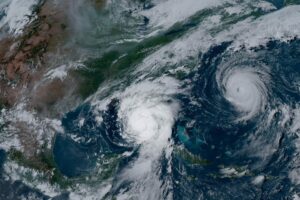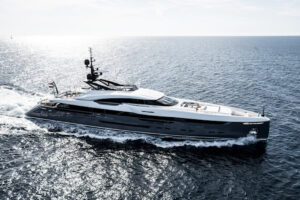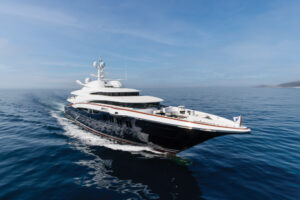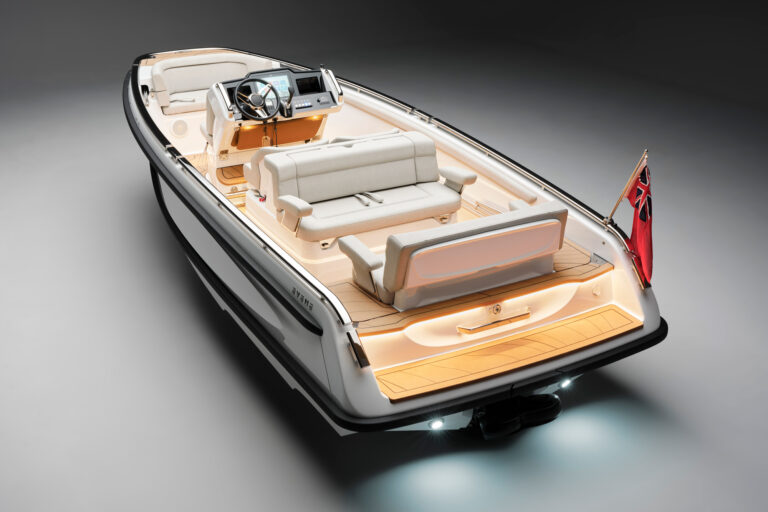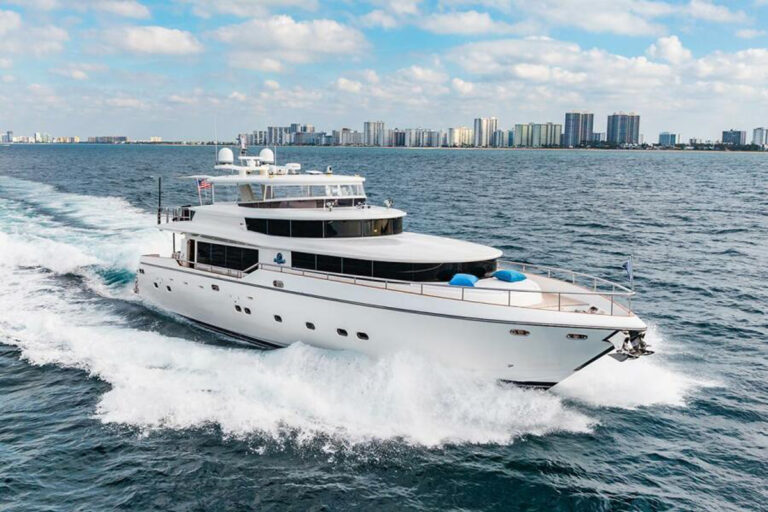
Good Hope: The Long Way
On October 24, Joshua crossed the longitude of Cape Agulhas, 200 miles from the coast. She will continue SSE until tomorrow, to gain more offing and leave the zone of convergence well to port.
It is my sixty-third day at sea, with 7882 miles covered between noon sights, a quarter of the distance from Plymouth to Plymouth by the three capes. The Atlantic is in the wake; ahead, the Indian Ocean. Yet Joshua is not actually in the Indian Ocean, despite the theoretical boundaries, but in kind of a no man’s land: the waters of Good Hope. They stretch between the longitude of the Cape and that of Durban, some 600 miles.
This area can be dangerous—often worse than the Horn — because of the seas raised by the Agulhas Current. Many 25 to 50 ft yachts remember it. Atom was rolled over near the Cape and emerged with her deck flat as a raft. Awahnee encountered the most terrible weather of her career in these waters, and she is a veteran of the Horn. Between Durban and Port Elizabeth, Marco Polo, Eve, Adios, Walkabout, Wanda, Marie-Térèse II and others were knocked on their beam ends, or hit very hard, by breaking seas kicked up by gales blowing against the Agulhas Current, which reaches 5 knots in places.
According to the Sailing Directions, the most dangerous area is off the steep SE edge of the Agulhas Bank, where frequent gales raise an enormous sea, reinforced by the meeting of the warm, salty current from the Indian Ocean and the cold (less salty) Antarctic Current. When you have seen the eddies caused by salinity differences in the Panama locks, one prefers to give a wide berth to similar phenomena when they are on an oceanic scale.
Yesterday, there was a gale from the west. Today, Radio Cape Town announces that nothing is expected before midnight. I should take advantage of it to get cracking. But I let Joshua drag along at 6 knots fully reefed, whereas she would better 7 if I replaced the 54 sq. ft storm jib with the 162 sq. ft job, and raised the big staysail instead of keeping the 38 sq. ft handkerchief she is carrying now. The fact is, I don’t have much resilience left. I got hardly any sleep last night; it was blowing hard, with an occasionally choppy sea that made me suspect a current convergence.
The sky is fairly clear now; and the westerly wind varies between force 5 and 6, without any real gusts, and the barometer seems steady at 1013 millibars. Yet the sea is strange: it subsides right away when the wind drops to force 5, only to rise very fast, with big breaking seas as soon as it exceeds force 6 in the moderate fair-weather squalls. I am also reluctant to hoist the large jib because I would have trouble bringing it in, should the weather worsen again. Last night I had difficulty keeping the jib under control and raising the storm jib in its place. My motions were clumsy and inefficient; it took me three times longer than usual to secure gaskets and reef points. And my reflexes were dangerously slow: somehow I got caught with water up to my knees at the end of the bowsprit, without having seen it coming. The mounting fatigue and under nourishment of these last days may be to blame.
Sure, I would like to get out of this lousy place by crowding on canvas. But if the weather returns mean, as it very quickly can here, I am much better prepared with shortened sail. Wiser in my weakened condition. Nothing to worry about, far from it…but I am asking Joshua to do her best until I get back into shape.
Outside are the high latitudes and the sea rumbling a little under the force 6 westerly wind; inside, the calm and peace of my little world. I smoke, dreaming before the little globe my friends on the yacht Damien gave me. They went north, I went south. And it is all the same, since we are at sea in our boats.
I gaze at the long curve drawn on the globe: Joshua‘s route since England, with porpoises and albatrosses, joys and sometimes sorrows.
During Tahiti-Alicante, Françoise and I would draw the route covered in the same way on the tiny school globe our children had sent us. And we would always wait until Joshua had covered ten degrees of longitude or latitude before extending the line. To have done it sooner would have brought bad luck, attracting a contrary gale or an endless calm.
I raise the big staysail at sunset, but keep the storm jib. A reef is shaken out of the mainsail and mizzen a little before midnight. The bow wave glows with phosphorescence, and the wake stretches out far astern, full of sparks.
The old-timers in the great days of sail come to mind: for centuries they furrowed the oceans in trade or discovery. But always for the sea. I reflect on what they bequeathed us in nautical documents, where words stand for the sea and sky, where arrows try to tell of currents and winds, of the anguish and joys of the sailors, as if that could be done, as if experience of the great laws of the sea could be passed along, as if the vibrations of the sea could go through you with only words and arrows.
And yet…I see myself in Mauritius again, fifteen years ago, studying the Sailing Directions and the Pilot Charts for the run from Port Louis the Durban. I would underline in red the ominous portents of an approaching SE gale blowing against the Agulhas Current, in blue the signs propitious to a return or holding of fair weather. Closing my eyes, I tried to see and feel what emanated from the rectilinear arrows, the dry phrases, the whole austere, scientific technicalness, full of hidden things trying to emerge in me.
Once under way for Durban, I felt at times that I had covered the same stage before. The sea had shaken itself free of the morass of words, and I was reliving a journey already made, reading in advance the Indian Ocean’s tidings.
The next day’s sight shows 164 miles covered. Joshua is 70 miles inside of iceberg limit, but she has reached the 40th parallel, and can now head NE to leave the ice area by tomorrow, while staying away from the current convergence.
The sky is covered with a lot of flattened cumulus, real fair-weather clouds for these latitudes, with sometimes large sweeps of blue, almost empty of cirrus. The wind, force 6 since dawn, has veered WNW. This shift worries me a little, especially as I was not able to get the weather report. But the barometer is steady; that is the main thing. The sea is very beautiful, meaning very heavy. On the other hand, breaking seas are few and generally not too large.
I spent most of last night in the cockpit again, because of the broken red line on the Pilot Chart showing the iceberg limit. This second sleepless night has not tired me. Still, it is about time I got out of here, otherwise my supply of tobacco and coffee will not last the trip! Joshua is doing 7 knots; at that rate we should soon be over the line.
I wonder if my apparent lack of fatigue could be a kind of hypnotic trance born of contact with this great sea, giving off so many pure forces, rustling with the ghosts of all the beautiful sailing ships that died around here and now escort us. I am full of life, like the sea I contemplate so intensely. I feel it watching me as well, and that we are nonetheless friends.
I made two serious mistakes today; my first since the beginning of the trip. I had just observed the meridian. Instead of stowing the sextant immediately, as I always do in these latitudes, I just boxed it, and wedged the in a corner of the cockpit: it was very important that I trim the sails a little before going below—a matter of a few seconds. Actually, it could easily have waited.
I was busy taking up slack in the mizzen preventer when a fairly large breaking sea crowned the rudder. I gauge it out of the corner of my eye, and pull myself up by the shrouds, knees tucked under my chin to avoid getting soaked as the wave flows over the aft cabin and fills the cockpit; the sextant is afloat.
Luckily, I had not snapped on my harness, and am barefoot and extra mobile. I dive for the sextant before the next roll carries it overboard along with three-quarters of the water flooding the cockpit. I am already in the cabin, both proud and ashamed of my double stunt.
I take the sextant out of its case, and wipe it off, and wedge it with pillows on the port berth. ‘You barely made it old pal.’ The case has to be rinsed inside to get rid of the salt, which would absorb moisture from the air and soon spoil the silver on the mirrors.
I light the stove to dry the case on an asbestos pad over a low flame, and go on deck to take a second reef in the main and mizzen, and a reef in the staysail. The wind is still WNW, now blowing a steady force 7. For this region it is still fair-weather sky.
When I go below again, the sextant case, while not exactly burning, is certainly dry now! I turn off the stove, remove boots, harness and oilskins, wipe off my hands, face and neck, put on my slippers and roll myself a cigarette. A spot of coffee? Why not! God, it’s good to be inside when things are roaring out there.
I am pleased with the way I had shortened the sail: quick reflexes, good grip. The staysail came along without any fuss when I reefed it, swallowing 75 sp. ft at a gulp.
I smoke, musing over the chart. Joshua is behaving beautifully under so little canvas, with almost not yawning in spite of her speed. Tomorrow we will be far away: 180 miles? 190? The Pilot Chart gives a knot favorable current for the area, so we could well break though the 200 mile ceiling if the wind holds. I am not tired; I have never been tired.
So, Joshua we are taking Good Hope in our stride.
I have not finished my cigarette when an enormous breaking sea hits the port beam and knocks us flat. All the portholes have shattered…no, they are intact (at least in my cabin); I can hardly believe it. A muffled torrential roaring and a sound almost like sheet iron under a blacksmith’s hammer fill the air.
I open the hatch and stick my head out. The sails are flapping because the boat has luffed. Incredibly enough, the booms are not broken in spite of the preventers. Luckily I had slacked off the one on the mainsail, just in case we were suddenly hove down on a broad reach. The 3/8 in. nylon preventer on the mizzen had parted. The line was three years old; I probably should have got rid of it long ago…but I liked it, and had got used to it during Tahiti-Alicante. Its parting probably saved the boom, but the latter, pushed amidships by the force of the water, neatly snapped off the wide vane shaft. Not serious: half a minute is all it takes to change the vane, thanks to a very simple rig. I have seven spare vanes left, and material to make more if necessary.
I go on deck to connect the steering wheel, and quickly duck below again, soaked by a blast of spray. The aft cabin portholes are intact, a sight that warms my heart. I fill the sails again, steering with the inside wheel, and go back on deck to replace the wind vane with a much smaller one set for running downwind, since Joshua was on a broad reach when the breaking sea hit. The only other thing is to replace the mizzen preventer with a new line. Quickly done. This time I give it plenty of slack as I did for the mainsail.
Everything is shipshape on deck. I can go below to get warm and straighten up the cabin. I pick the globe out of the sink, on the starboard side, and wedge it back in place, to port. The island of Java is a bit scraped.
The sextant…I had forgotten it on the port berth, buried in the pillows. Now it looks out at me form the starboard berth. Poor little pal, if this hasn’t done you in, there really is a guardian angel for sextants, and morons too. First I leave it in the cockpit, then on the windward berth…It took an eight foot free fall through the cabin when Joshua went over. One of its legs sheared off at the thread, though it is nearly ¼ in. thick. There are three holes in the plywood facing of one of the drawers. The one on the left is at least a ¼ in. deep, the right one a bit less, the top one barely visible. They are the holes made by the legs of the sextant when it smashed into the drawer.
Joshua has a second sextant, a big Poulin micrometer drum model, very accurate and easy to read; a light in the handle makes it particularly handy for star sights. The other one (now an amputee) is an old vernier model which I very much like for sun shots in the high latitudes because it is small, light, and easy to handle. I will try to glue the leg back with epoxy cement when I find it. I will also have to adjust the mirrors, which must be out of alignment after such a shock.
By and large Joshua, the sextant and I came through all right. But two such serious mistakes, one after the other, are inexcusable, and cause for concern.
Barely an hour later, Joshua had another knockdown. This time, I saw nearly all the action.
I was squatting on the insider steering seat, watching the sea through the little rectangular ports of the metal turret. The wind had noticeably eased since the first knockdown, to force 6 at most. But the sea had become strange, with peaceful areas where it was very heavy, yet regular, with no dangerous breaking waves. In those areas, I could have walked blindfolded twenty times around the deck. Then, without any transition, it would turn jerky and rough; high cross-seas overlapped to provoke sometimes very powerful breaking waves. It was probably one of these cross-seas that hit us earlier. Then Joshua would again find herself in a quiet area for ten minutes or more, followed by another rough one.
From time to time I stood up on the seat to take a few deep breaths and get a better feel of the conditions. During the quiet periods I went out in the cockpit, but without letting go of the hatch cover handle, ready to dive below.
If I were rounding Good Hope in the same direction again, I would probably stay between the 41st and 42nd parallel (instead of the 40th), to avoid skirting to closely the area of convergence of warm and cold currents. True, this would force me much further beyond the red line on the Pilot Chart, with a longer period of vigilance. Last night’s watch for icebergs was enough, but I will hardly need to stand one tonight as we will be practically clear of the red line. So if I had to do it over, I might just do the same as now, if the barometer behaved. Which it is; it has even tended to rise since this morning.
I went below to suck on a can of condensed milk and roll myself a cigarette. Then I regained my perch, again watching the sea through the closed turret. We were crossing another rough stretch.
An exceptional wave rose astern; it looked like a small dune. It was not very steep, but seemed twice as high as the others, if not more. The sea was not breaking yet, and I had the impression that it would not break, that it did not need to.
I jumped to the floor and gripped the chart table with both arms, my chest flat against it and my legs braced. I distinctly felt the surge of acceleration as Joshua was thrust forward. The she heeled a little, seemed to brake, and was slammed down hard. Water spurted through the hatch cover joint, but I am not sure the wave responsible even broke. Joshua righted herself in four or five seconds. It took longer than after the first knockdown; a huge force seemed to keep her pressed on the water.
Again, no damage. Mat and spreaders held. The sails did not split. There was plenty on slack in the preventers, fortunately, and nylon can stretch. If things inert to us could do more than grit their teeth, I would have heard some real screaming up there on deck. Even the miraculous little wind vane held, and Joshua does not seem to have luffed; she is running downwind again, as if everything were already forgotten. Just the same, I am astonished to see the radar reflector in place on the masthead pivot. It too has already forgotten.
I am almost sorry now that I did not stay glued to the to the seat to see the whole show, my eyes riveted to the little turret ports… but when I saw the dune-like sea I felt Joshua could have pitchpoled, in that case I would have broken my neck on the hatch coaming.
Pitchpoling at force 6… I know very well it is impossible… but I feel anything is possible around here.
The wind drops further towards the end of the afternoon. The sea takes on its grandeur of old, tranquil and powerful. I feel the night will be fine, without treachery. I ought to stretch out for an hour before tonight’s watch for possible ice; I have been on the go since dawn…for many dawns. But the sun will soon set, and I cannot tear myself from my contemplation of the sea and the boat.
I do have to get more sleep though; catnapping is easy. I should pay more attention to food. I rely on coffee and tobacco to keep me going, and sustain myself by nibbling here and there. I ought to be able to find time for solid sleep and hearty meals. After all, there is not much to do on a boat, even rounding Good Hope. Or even the Horn. But there is a lot to feel in the waters of a great cape. And that takes all the time in the world
So one forgets oneself, one forgets everything, seeing only the play of the boat with the sea, the play of the sea around the boat, leaving aside everything not essential to that game in the immediate present. One has to be careful though, not to go further than necessary to the depths of the game. And that is the hard part… not going to far.
An excerpt from The Long Way, reprinted with permission from Sheridan House.

